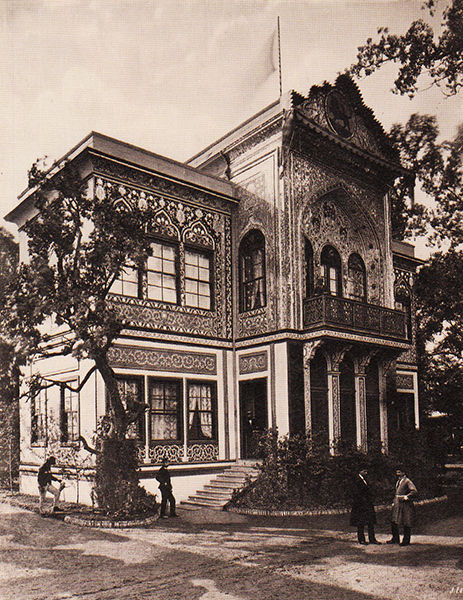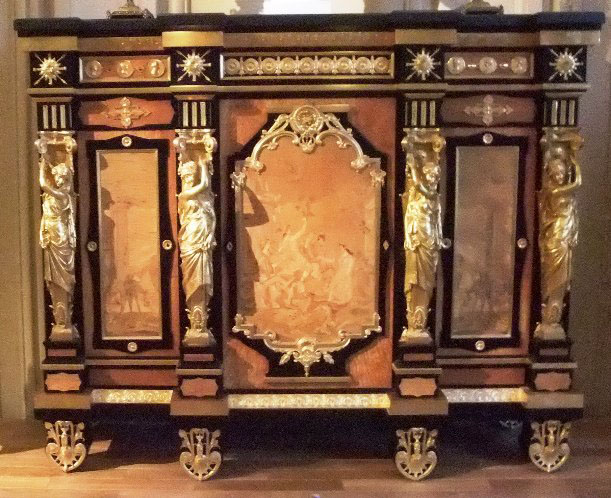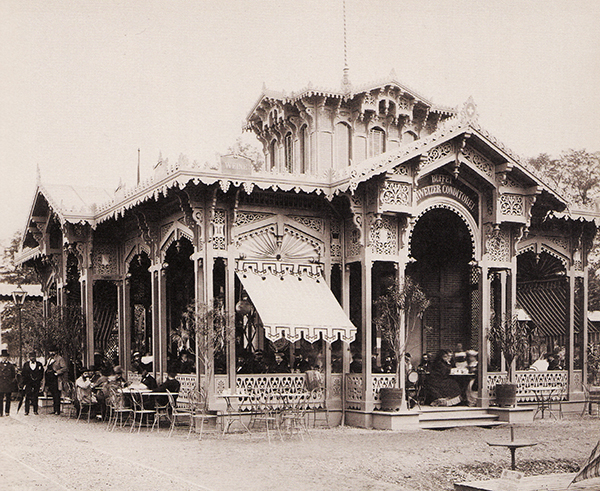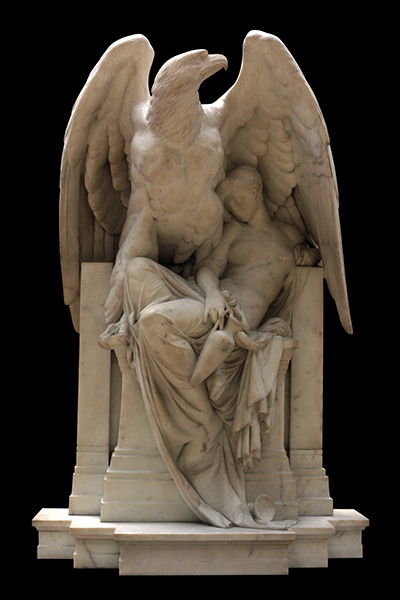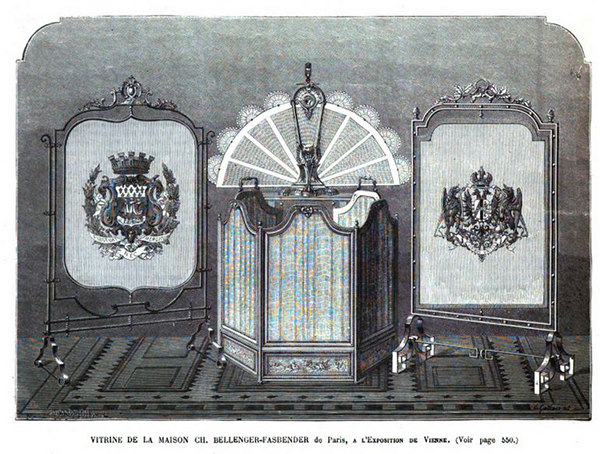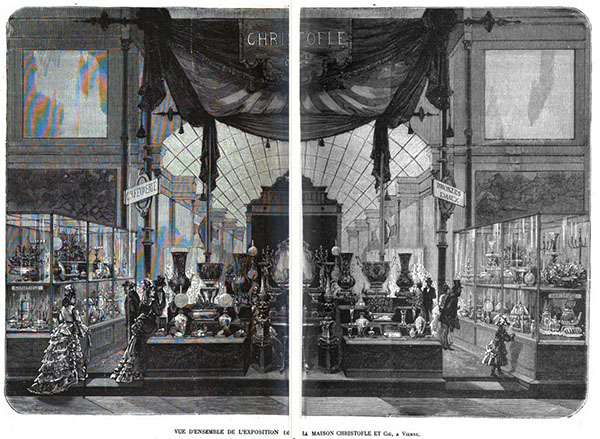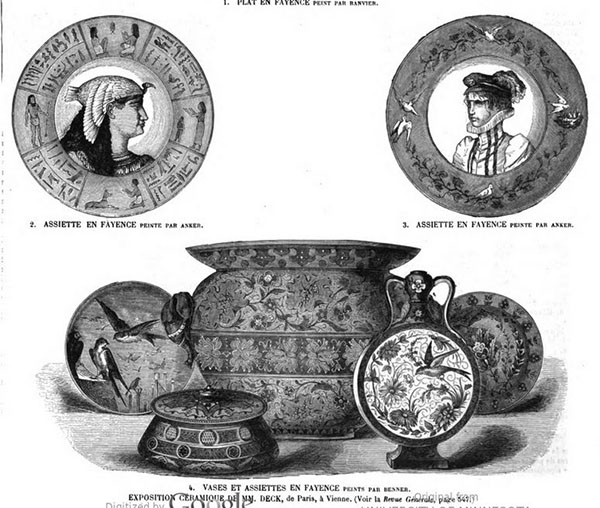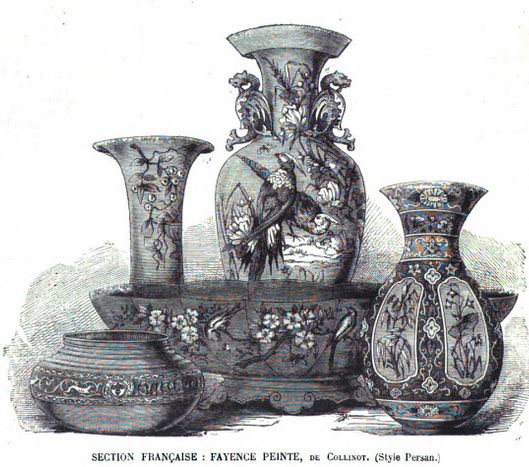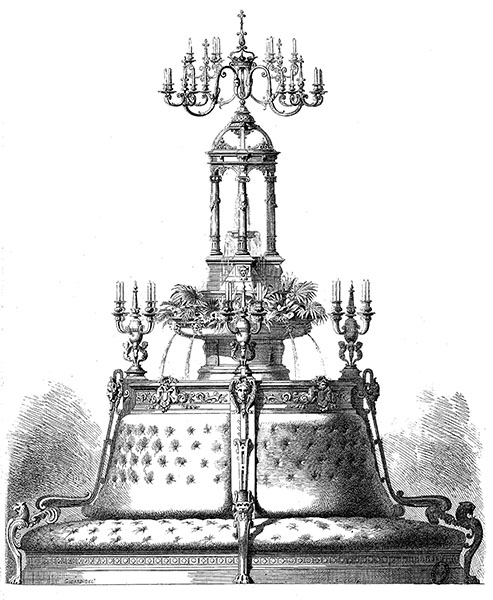World's Fair of 1873
Download PDFIn 1873, it was Vienna’s turn to host the fifth great World’s Fair. Emperor Franz-Joseph I prepares it as soon as he returns from the Parisian World’s Fair of 1867 , to mark its twenty-five years of reign, and to show the face of a cosmopolitan Austria-Hungary, open to international trade. His Exhibition far surpasses the others in area, with 233 hectares against the 44 of 1867.
The Baron Karl von Hasenauer builds the palace of Industry, with a central Rotunda gathering machines, industrial products and works of art. In the park, the national pavilions compete with beauty and originality, and at this World’s Fair, many pavilions are also dedicated to the popular cultures, farms and fishing houses of the world. Another novelty is a Pavilion of Foreign Princes, designed for visiting sovereigns to rest.
The palace built by Khedive Ismail Pasha, for the pavilion of Egypt, is certainly the most admired of the Exhibition, making the most beautiful dreams of the Orient come true. If the palace is hailed as the most beautiful monument, the Chinese Tea Pavilion is perhaps the most original, with its leaning walls. The United States has installed an Indian wigwam, where gin and other spirits are served, and the Brazil pavilion displays rich minerals and rare woods.
Not far from the egyptian palace is the Japanese pavilion: a Japanese garden, where a small bamboo bridge crosses a miniature river, a pavilion "where the strange mingles with the fantastic". The garden is decorated with bronzes, earthenware, stone lanterns as well as a temple, and above all, a grandiose reproduction of the Buddha of Kamakura, more than 15 meters high. Thus, the encounter with this great civilization is prolonged, and the visitors are not at the end of their surprises: “the flora folds to the most whimsical caprices, and the public hastens every day to admire these dwarf trees, which are always a subject of astonishment, as well as the Japanese house with its paper hangings, paper blinds and carpets, still in paper.”
France wins 247 medals, making it the third most rewarded country. It is mainly in the arts that the country stands out, with many rewarded painters and sculptors, including Albert-Ernest Carrier-Belleuse for Hebe Sleeping, and Eugene Delaplanche for Eve After the Sin, but also Carpeaux, Falguière, Perraud, etc.
In the decorative arts, bronzes and artworks are particularly appreciated: Barbedienne , Christofle and Durenne win a Prix d'Honneur, as well as Boucheron, Monduit and Thiébault. It is then in the earthenware and glassware that France is distinguished by other honors, with the ceramics of Sèvres, the mirrors of Saint-Gobain, and the fine work of Theodore Deck, that are some of the first examples of Japanism . Other artists are still distinguished by medals: Mazaroz, Diehl, Sormani and Fourdinois .









